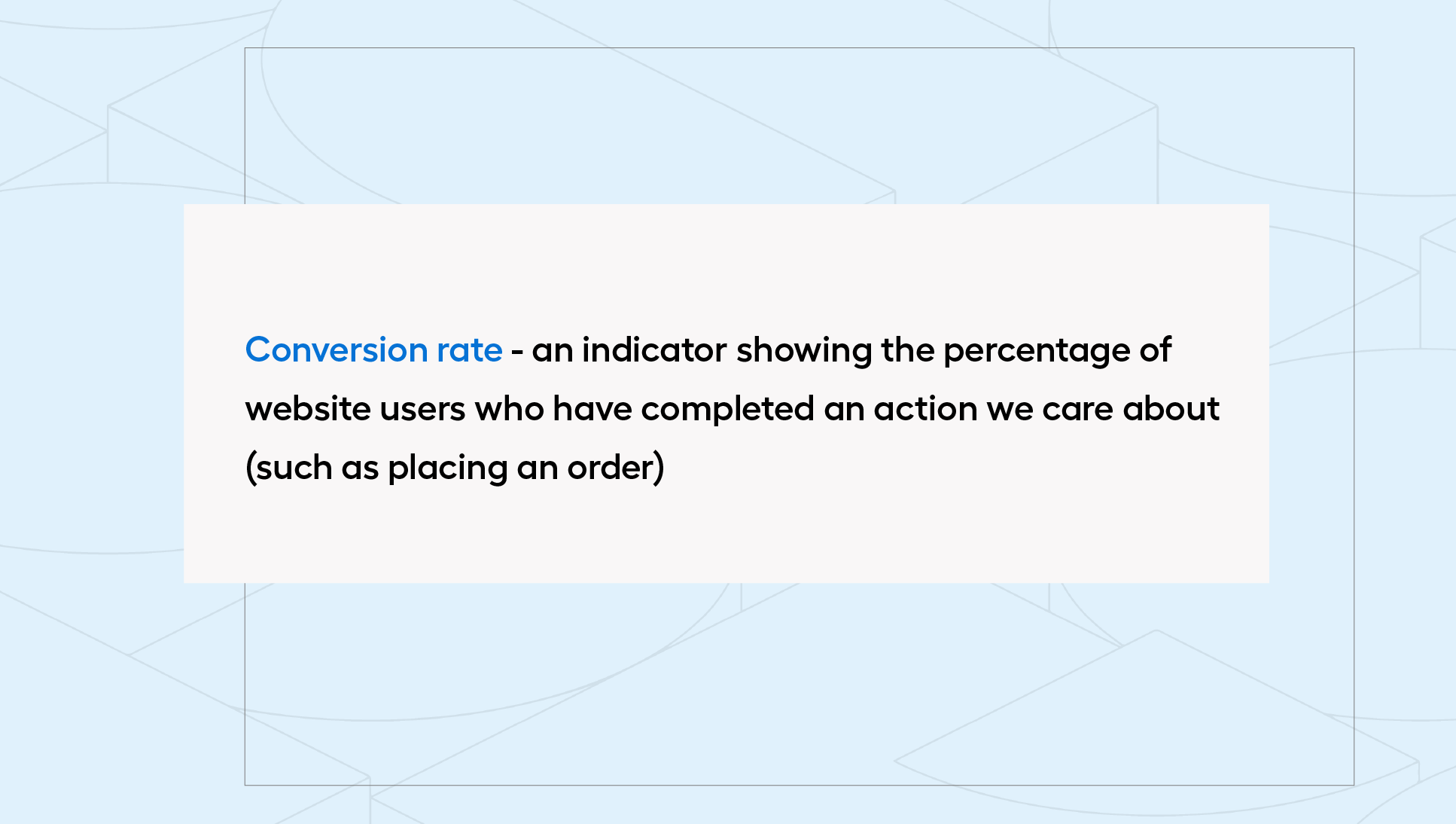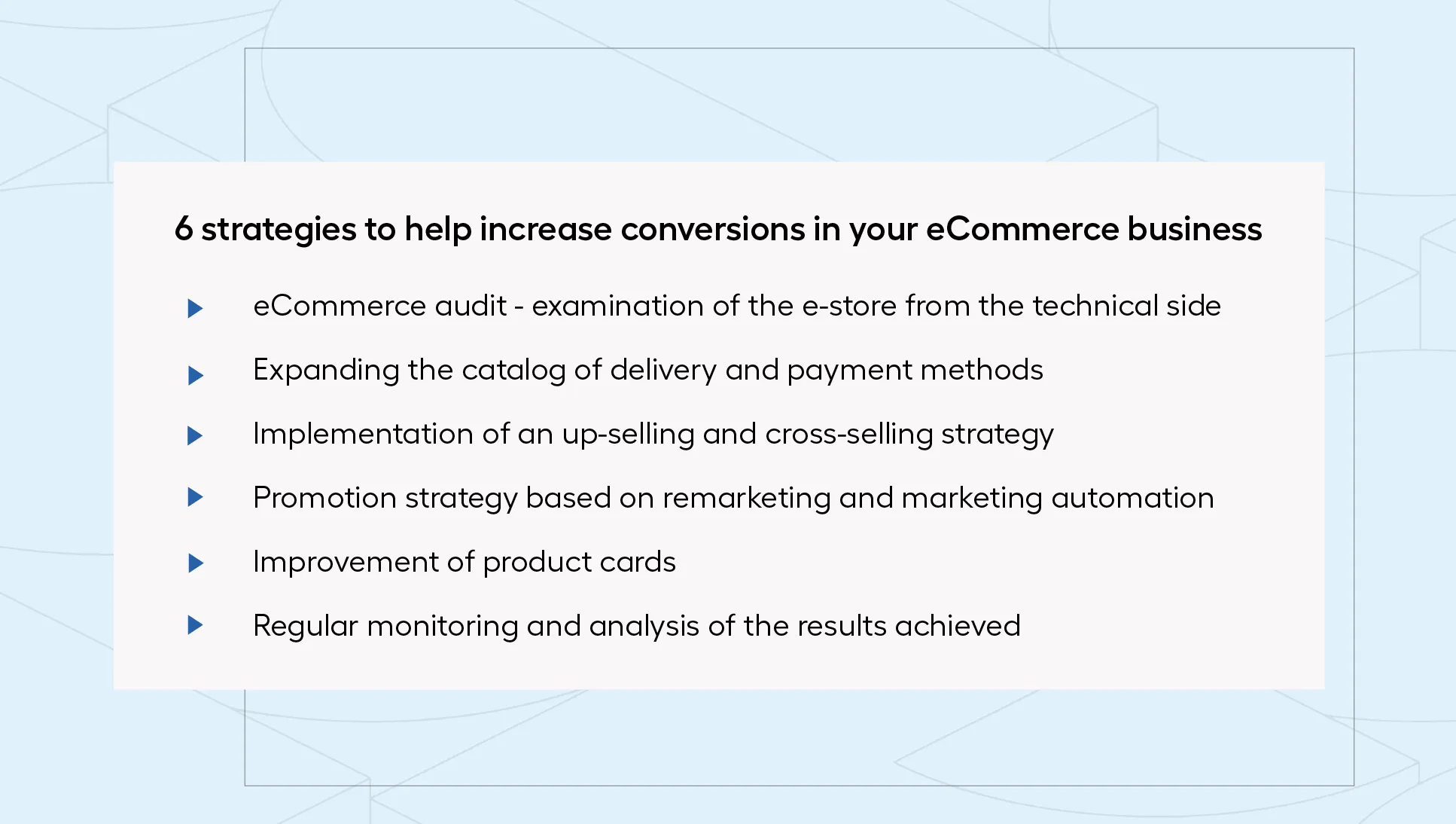How to increase conversion in an online store - best practices and strategies
A great product is the absolute basis in the area of online store sales - it is obvious that if you do not offer your customer a solution that meets all their needs (functional, emotional, visual benefits, etc., depending on the specific product), the chances of success are slim. Sometimes, however, the mere presence of a great product is unfortunately not enough to attract users, turn them into actual customers and achieve satisfactory online sales results. In such a situation, it is necessary to develop a strategy that leads to increased conversions in the online store. Best practices in this regard are presented below - feel free to read on if you are looking for effective ways to sell more!
What is a conversion rate?
Conversion rate is the most important indicator that should be analyzed by every online store, regardless of industry. This is because it indicates the percentage of website visitors who have completed an action we care about. In the case of eCommerce, this is usually the sale of a product or service, but in the case of websites it can be, for example, signing up for a newsletter, downloading an ebook, creating a customer account or clicking on a link (depending on what we care about, i.e. the established conversion goal).
In practice, the conversion rate shows us, firstly, how interesting an offer we have, and secondly, how effective we are in convincing users to use it. The amount of this indicator (and especially changes both upward and downward) therefore allows us to assess the effectiveness of our sales and marketing activities or find areas for improvement, such as in the technical area of the online store. To track changes, it will help us to set the right conversion goal in Google Analytics and to tag specific activities with Google Tag Manager.
How do we calculate the conversion rate? By dividing the number of conversions (i.e. transactions, for example) by the number of users on the site in a given period (e.g. in a month). For example: if an online store was visited by 1,000 people, and the number of transactions made was 20, the conversion rate reached 2%.

Increasing conversions in eCommerce - how?
It's not surprising that every e-commerce store wants the conversion rate to be as high as possible - because such a situation means that our product offerings, content, site design and other elements of our marketing strategy meet the needs of our customers and provide sales (i.e. financial gain, new growth opportunities, etc.). However, this situation is not always the case. Then it is imperative that we consider what we can change in our operations to ensure improvement. Below are the most important actions you should take in this area.

1. optimization of the online store from a technical point of view
Does your online store provide easy navigation, conducive to quickly finding the products you need? Does the site load quickly enough? Is the design minimalistic and doesn't cause overkill due to too bright colors, large banners or too many graphics? Is the check-out as streamlined as possible, the mobile version responsive, and the sub-pages free of errors (e.g. 404s indicating that the site was not found)? These are just the first questions you need to ask yourself when auditing an online store from a technical perspective. After all, all of these elements affect the user's experience in the online store (UX, User Experience), which must be as positive as possible for the user to turn into an actual customer and convert.
So start by working at the grassroots - conduct your own audit or outsource it to an external company (eCommerce audit is also in our offer) to see what you can improve in this technical and UX area. We assure you that there will always be an element that can be improved!
2. provide a wide catalog of payment and delivery methods
Delivery? By courier, parcel post, or cash on delivery. Payment? On delivery, by quick transfer, or with the increasingly popular deferred payment (BNPL - Buy Now, Pay Later). Each user is characterized by different preferences in terms of payment and delivery methods chosen, and the lack of favorite methods is often the reason for abandoning the shopping cart and using a competitor's offer. So if you care about high conversion in your online store, you must make sure that the catalog of offered delivery and payment methods is as wide as possible.
In this regard, you should also remember to constantly monitor trends in the e-Commerce industry to implement potential forms early on and stay ahead of your competitors.
3. implement up-selling and cross-selling strategies
As another step to increase conversion in your online store, you may also choose to implement sales strategies known as up-selling and cross-selling. What do these activities consist of? Up-selling means encouraging a customer to buy a more expensive product or service than the one he or she was initially interested in, while cross-selling refers to offering him or her complementary products. For example: when a customer chooses a camera, you can offer him or her a product with better functionalities (as part of up-selling) or offer, for example, to buy a case to protect the product (a form of cross-selling). Such messages on the product card or in the shopping cart are characterized by high effectiveness in the area of increasing the average value of the shopping cart and maximizing possible profits.
4. leverage remarketing and marketing automation capabilities
Users who visited your site but did not convert are an ideal example of a group to which you can - and even should - target remarketing efforts (e.g., as part of an ad campaign that displays previously viewed products to users on social media). Doing so increases the customer's exposure to the brand, which can ultimately lead to persuasion to purchase the product in question. Such an action also usually allows for the delivery of a personalized offer that is more relevant to the user's needs and increases the chance of completing the transaction.
Another remarketing action you can opt for is to target a potential customer with an email (using marketing automation capabilities) encouraging him to return to your online store in case of an abandoned shopping cart. You can encourage him or her by, for example, offering an additional discount or free delivery, which can sometimes work great as a purchase trigger and provide you with a conversion.
5. Product card optimization
The product card is one of the most important elements of an online store - it is the last point of contact between the customer and the brand before deciding to add to the cart and place an order. Thus, it serves as a showcase for your product (like a website in a stationary store), thus significantly affecting conversions - and the more refined it is, the better result you can expect. So analyze your product card and consider whether you're conveying enough information in the description, whether the photos provide the opportunity to see the product from all sides, whether the additional benefits (such as free delivery or the ability to pay with your chosen deferred payment provider) are visible enough. You may even find small elements that you can easily and quickly improve.
Remember that according to the latest "E-commerce in Poland 2022" report by Gemius, as many as 42% of Internet users do not make online purchases because they care about being able to see the product in person. Refined product cards can help minimize the possibility of this occurring.
6. continuous monitoring and analysis of the conversion rate
Last, but not least - and on top of that, not to be done all at once. It is imperative to remember that if you care about continuously increasing conversions in your online store, you should continuously monitor changes in the conversion rate and draw conclusions that will allow you to take the next steps (using Google Analytics, but also, for example, HotJara or other monitoring and analysis tools). Did your remarketing efforts have the desired effect? Great, plan another such campaign targeting a different group of users. Do you see a drop in conversions in a given month and it's combined with the number of abandoned shopping carts? Develop a rescue strategy. In this area, you may also decide to conduct A/B tests (e.g., within a product subpage) to test which variant is more effective in convincing users to buy.
Conversion in an online store - summary
The practices outlined above for increasing conversions in an online store are not a closed catalog, of course - additional tactics can also be highlighted, such as adding reviews and testimonials, creating special promotions or implementing the shipping of free samples or a subscription model into your sales strategy. What actions you decide on should be best suited to your industry, the needs of your target audience and the nature of the product itself, but the ones we mentioned above are the absolute basics in any case. So make sure you optimize your online store for them, and then consider what additional practices might work for your business.



